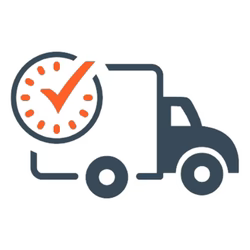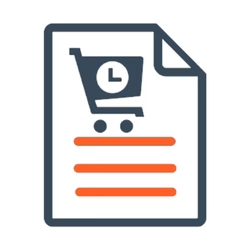When embarking on a project that requires securing hoses, knowing the right way to choose hose clamps for your projects can make all the difference between success and frustration. But how do you navigate the myriad of options available and ensure you’re selecting the best one for your needs? From my years of experience working in both DIY and professional settings, I've discovered that understanding the strengths and limitations of different hose clamp types—such as screw/band clamps, spring clamps, and ear clamps is crucial. Research shows that choosing the wrong clamp not only risks leaks and inefficiency but can significantly reduce the lifespan of your hoses. By diving into this topic, we’ll explore key considerations like material durability, size compatibility, and specific use cases, empowering you to make informed decisions that will enhance the quality and reliability of your projects.
1. Understanding the Importance of Hose Clamps
Function of Hose Clamps: Hose clamps may seem small, but their role is mighty. These little guys keep your hoses securely in place, preventing leaks and ensuring smooth operation in your projects.
Significance of Proper Hose Clamp Selection: Choosing the right hose clamp is crucial. The wrong clamp can lead to leaks, inefficiencies, and even project failures. Don't overlook the importance of this small but vital component!
2. Types of Hose Clamps Available
Worm Drive / Gear Clamps
A popular choice due to their versatility and ease of use, worm drive clamps feature a screw mechanism that tightens around the hose for a secure fit.
Spring Clamps
With their convenient push-on design, spring clamps offer quick and simple installation. Perfect for light-duty applications where ease of use is key.
Ear pinch hose clamps, also known as ear clamps, are a type of fastening device used to secure hoses onto fittings. They are characterised by their unique design that includes one or two “ears” which are pinched together to create a tight seal around the hose.
These clamps consist of a band, typically made from galvanized or stainless steel, which encircles the hose. The band features a screw thread pattern that has been cut or pressed into it, allowing for adjustable tightening.
Polymer hose clamps are fastening devices, made using materials from polymers. These clamps offer several advantages over traditional metal clamps, including corrosion resistance, lightweight construction, and flexibility in application.
High torque are heavy duty worm drive hose clamps designed to secure hoses and tubes in various applications, particularly where high sealing pressures are required.
3. Factors to Consider When Choosing Hose Clamps
Material Compatibility
Ensure your hose clamp material is compatible with the substances it will come into contact with to prevent corrosion or deterioration over time.
Pressure Rating
Consider the pressure requirements of your project to select a hose clamp that can handle the load without compromising performance or safety.
Environmental Conditions
Take into account the environment where your project will be operating. Factors like temperature variations, exposure to chemicals, or outdoor elements can impact the longevity of your hose clamps.
4. Proper Sizing and Installation Techniques
Measuring for the Correct Size
Don't play the guessing game—measure your hose diameter accurately to ensure the perfect fit. A well-sized hose clamp is key to a leak-free connection. Check our size chart lower down the page. Always measure the diameter of the hose when it is installed on the spigot to get the most accurate diameter.
Installation Best Practices
Proper installation is critical for the effectiveness of your hose clamps. Make sure they are securely fastened, evenly distributed, and positioned correctly to avoid leaks and ensure reliability in your projects. Using professional rated hose clamp application tools saves time and effort.
5. Tips for Maintaining Hose Clamps
Regular Hose Clamp Inspection: Regularly inspect your hose clamps for any signs of wear, corrosion, or damage. Catching issues early can prevent leaks and ensure the clamps remain effective.
Tightening and Adjustments of Hose Clips: Periodically check the tightness of your hose clamps and make any necessary adjustments. Over time, clamps may loosen due to vibrations or temperature changes, so keeping them properly tightened is key to a secure connection. Depending on the type of hose clamp used, you may need specific tools to apply or remove the clamps properly, like the use of the ratcheting tool for spring clips.
6. Common Mistakes to Avoid When Selecting Hose Clamps
Underestimating Pressure Requirements: Don't overlook the pressure requirements of your project. Choosing hose clamps rated for lower pressure than necessary can result in leaks or failures, so always match the clamp to your specific needs.
Using Incorrect Size or Type: Selecting the wrong size or type of hose clamp is a common mistake that can lead to ineffective sealing and potential safety hazards. Ensure you choose the right size and material for your application to prevent leaks and ensure proper functionality.
In conclusion, selecting the appropriate hose clamps for your projects is a critical step towards ensuring optimal performance and longevity of your hose connections. By understanding the different types of hose clamps, considering key factors during selection, following proper sizing and installation techniques, and implementing regular maintenance practices, you can enhance the efficiency and reliability of your systems. Remember to avoid common mistakes in hose clamp selection to prevent potential issues down the line. By taking these steps, you can confidently choose the right hose clamps for your projects and achieve leak-free and secure connections for your applications.
Hose Clamp Size Chart
|
British standard for worm-drive hose clips |
||
|
Size |
Adjustment range (millimetres) |
Adjustment range (inches) |
|
000 |
9.5 – 12 |
3/8 – ½ |
|
M00 |
11 – 16 |
½ – 5/8 |
|
00 |
13 –20 |
½ – ¾ |
|
0 |
16 – 22 |
5/8 – 7/8 |
|
0X |
18 – 25 |
¾ – 1 |
|
1A |
22 – 30 |
|
|
1 |
25 – 35 |
1 – 1 3/8 |
|
1X |
30 – 40 |
1 2/8 – 1 5/8 |
|
1M |
32 – 45 |
1 ¼ – 1 3/4 |
|
2A |
35 – 50 |
1 3/8 – 2 |
|
2 |
40 – 55 |
1 5/8 – 2 1/8 |
|
2X |
45 – 60 |
1 ¾ – 2 3/8 |
|
3 |
55 –70 |
2 1/8 – 2 3/4 |
7. Types of projects that require Hose Clamps
Just like a toolbox full of different tools for different jobs, hose clamps come in a range of types to suit various needs. From worm drive / gear clamps to spring clamps and polymer clamps, there's a clamp for every occasion. Each type has its unique design and application, ensuring that no hose is left unsecured in the world of projects and repairs.
A. Automotive Projects
When it comes to working on cars, hose clamps are like the unsung heroes quietly doing their job behind the scenes. In automotive projects, hose clamps play a crucial role in keeping cooling systems running smoothly and ensuring fuel delivery systems operate without a hitch. Dealing with leaks and seepage from hose clamps in your car can be a real drip! If you find fluid pooling under your vehicle, check the hose clamps for any signs of wear, cracks, or improper installation. Tighten the clamp securely, and if needed, replace it with a new one to stop the leak dead in its tracks.
For CV Boot Joints We recommend using the Expertainer driveshaft kits, perfect for vehicle mechanic's and automotive technicians.
Use of Hose Clamps in Automotive Cooling Systems
In the world of automotive cooling systems, hose clamps are the glue that holds everything together. Whether it's securing a radiator hose or a heater hose, these clamps make sure that coolant flows where it should and engines stay at the right temperature.
Securing Hoses in Vehicle Fuel Delivery Systems
In fuel delivery systems, precision is key, and hose clamps ensure that there are no fuel leaks to dampen your drive. From fuel lines to filler hoses, these clamps keep everything in place, allowing your car to run smoothly and efficiently without any fuel-related hiccups.
B. Plumbing and Irrigation Systems
From fixing a leaky faucet to setting up a sprinkler system, hose clamps have a vital role to play in the world of plumbing and irrigation. These clamps help keep pipes and hoses secure, preventing water wastage and ensuring your projects flow smoothly. Hose clamps play a significant role in ensuring the integrity and functionality of plumbing systems. By selecting the appropriate type of hose clamp, following correct installation procedures, and conducting regular maintenance checks, plumbing professionals and DIY enthusiasts alike can optimise the performance and longevity of their systems. Read out articles to stay informed about the latest trends and innovations in hose clamp technology to remain ahead of the curve and continue to improve the efficiency of your plumbing projects
Role of Hose Clamps in Plumbing Installations
In plumbing installations, hose clamps are the unsung heroes working tirelessly to keep things watertight. Whether it's connecting hoses to faucets, securing pipes, or fixing leaks, these clamps ensure that water flows where it should and doesn't end up where it shouldn't.
Applications in Irrigation Systems and Sprinkler Installations
In the realm of irrigation systems and sprinkler installations, hose clamps are the silent guardians making sure that water reaches every corner of your garden or lawn. By securing hoses and pipes in place, these clamps ensure efficient water distribution, helping your plants thrive without any dry spells.
C. Industrial Machinery and Equipment
Industrial machinery and equipment rely on precision and efficiency to keep operations running smoothly. Hose clamps play a much needed role in industrial fluid handling systems and pneumatic systems, ensuring that everything stays connected and operational without any costly leaks or disruptions.
Hose Clamps in Industrial Fluid Handling Systems
Industrial fluid handling systems can be complex beasts, with various hoses and pipes interconnecting to keep the machinery running. Hose clamps are the silent sentinels holding everything together, ensuring that fluids flow smoothly without any unexpected leaks or spills.
Securing Hoses in Pneumatic Systems
In pneumatic systems where air pressure is crucial for operations, hose clamps play a vital role in keeping hoses secure and airtight. Whether it's in manufacturing plants, assembly lines, or pneumatic tools, these clamps ensure that air flows where it should, powering processes without any interruptions or leaks.
D. HVAC and Refrigeration Systems
Hose clamps play a crucial role in the functionality and efficiency of HVAC and refrigeration systems, serving as essential components for securing and sealing various connections. Understanding the different types of hose clamps, their proper selection, installation techniques, and maintenance practices is vital for ensuring the reliable operation of these systems especially as these application have a electrical component to them.
Use of Hose Clamps in Air Conditioning Units
When it comes to keeping your cool, hose clamps play a crucial role in securing hoses in air conditioning units. Whether it's ensuring proper airflow or preventing leaks, hose clamps are the unsung heroes of HVAC systems.
Securing Refrigerant Lines with Hose Clamps
Refrigerant lines are like the arteries of refrigeration systems, and hose clamps are the trusty guards that keep them in place. From preventing leaks to maintaining efficiency, hose clamps are essential in securing these vital components.
E. Marine and Boating Applications
Hose clamps play a vital role in the functionality and safety of marine and boating equipment, ensuring secure connections for various fluid systems. In the dynamic and corrosive environment of watercraft, the proper selection, installation, and maintenance of hose clamps are essential to prevent leaks, maintain system integrity, and uphold operational efficiency. The JCS high torque clamps are registered with Lloyd's register, an international marine shipping classification so you can be sure these products are fit for marine usage.
Hose Clamps for Marine Engine Cooling Systems
In the vast seas of marine engineering, hose clamps are the anchors that secure hoses in marine engine cooling systems. They ensure a smooth sailing experience by preventing leaks and keeping systems running smoothly.
Securing Hoses in Boat Plumbing Systems
From bilge pumps to freshwater systems, hose clamps are the MVPs of boat plumbing. By securely fastening hoses, they help maintain water flow and prevent any unwanted surprises while out on the water.
F. Agricultural and Farming Machinery
Hose clamps play a big role in the smooth operation of agricultural and farming machinery by securing hoses and ensuring proper fluid flow. Understanding the significance of selecting the right type of hose clamp and ensuring its correct installation is essential for maintaining the efficiency and safety of farm equipment. From traditional worm gear clamps to specialised heavy duty clamps, the variety of options available can impact the performance and longevity of the machinery
Role of Hose Clamps in Agricultural Equipment
Agricultural equipment relies on hose clamps to keep things in order. From tractors, sprayers, seed drills, slurry machines to irrigation systems, hose clamps ensure that hoses stay put, preventing leaks and maximising efficiency in the field.
Securing Hoses in Farm Irrigation Systems
When it comes to watering crops, hose clamps are the unsung heroes of farm irrigation systems. By securely fastening hoses, they help farmers distribute water efficiently, promoting healthy growth without any unnecessary leaks.
G. DIY Home Improvement Projects
Using Hose Clamps in Home Plumbing Repairs
For the DIY enthusiasts tackling home plumbing repairs, hose clamps are like the trusty sidekicks. Whether fixing a leaky pipe or replacing a hose, these versatile clamps make the job easier and ensure a secure connection.
Securing Hoses in DIY Garden Irrigation Systems
From backyard gardens to rooftop planters, hose clamps are the handy helpers in DIY garden irrigation systems. By keeping hoses in place and preventing leaks, they help gardeners water their plants with precision and ease. In conclusion, the versatility and reliability of hose clamps make them indispensable in a wide array of projects and applications. Whether you are working on your car, maintaining industrial machinery, or embarking on a DIY home improvement project, having a good understanding of hose clamps and their usage can greatly enhance the efficiency and effectiveness of your work. By recognising the importance of these small yet crucial components, you can ensure that your systems and equipment are securely connected and functioning optimally.
FAQ
1. Why are hose clamps important in a project involving hoses?
Hose clamps are vital for ensuring secure connections, maintaining fluid containment, supporting diverse applications, enhancing safety, facilitating maintenance, and preventing damage in projects involving hoses.
2. How do I determine the right size of hose clamps for my application?
Measuring accurately, considering material properties and environmental conditions, selecting an appropriate type of clamp based on application needs, referring to sizing charts provided by manufacturers, and conducting test fits—you will be able to determine the right size of hose clamps effectively.
3. What are the common mistakes to avoid when selecting hose clamps?
When selecting hose clamps, it is crucial to avoid several common mistakes that can lead to ineffective sealing and potential system failures. First, failing to choose the correct size is a significant error; using a clamp that is too small can cause damage to the hose, while one that is too large may not provide adequate pressure. Second, neglecting the material compatibility can result in corrosion or degradation over time; for instance, stainless steel clamps are preferable for corrosive environments, whereas plastic clamps may be suitable for lighter applications. Third, overlooking the type of clamp needed for specific applications can lead to improper function; worm gear clamps are versatile but may not be ideal for high-pressure situations where a constant torque clamp might be necessary. Fourth, ignoring installation guidelines can also pose risks; ensuring proper torque during installation is vital to prevent leaks. Lastly, not considering the operating environment—such as temperature extremes or exposure to chemicals—can compromise the integrity of the clamp and the connected hoses. By being mindful of these factors, one can ensure a reliable and effective hose connection.
4. Can I reuse hose clamps or should I always use new ones?
While it is possible to reuse hose clamps, it is generally safer and more reliable to use new ones, particularly in critical applications where failure could lead to significant damage or safety concerns.
Questions?
Email us at sales@hcl-clamping.co.uk or speak to one of our experts for further information on the ideal clamping solution for your application on telephone number: 01761 417714 or via our live help function on the website




















